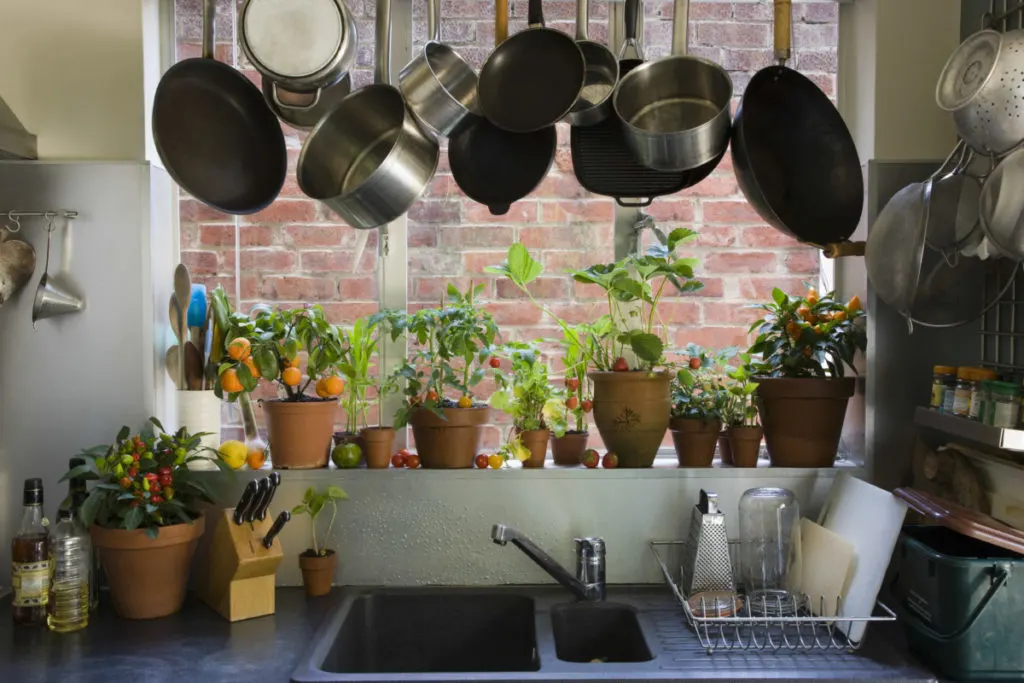
There’s nothing better than picking fresh lettuce, peas, and radishes from your windowsill in the middle of the winter. Yes, you heard correct, your windowsill.
We all know you can grow a pot of parsley in your kitchen window. But why stop there?
Believe it or not, there are plenty of veggies you can grow on that tiny little ledge on every window in your home.
Whether you’re an apartment dweller longing for a garden or someone looking to maximize as much growing space as possible, a small windowsill garden is a great idea for anyone.
And why wouldn’t you want to grow veggies on your windowsill?
- It’s easy to do.
- Having green plants in your space cleans your air.
- Growing plants indoors adds lush greenery to your home.
- You could be eating fresh salads in January.
- And unless you’re a 12-year-old kid who hates vegetables, growing them right in your home, close to your kitchen, just makes sense.
Let’s take a quick look at what you’ll need to prepare for your mini-indoor garden.
Light
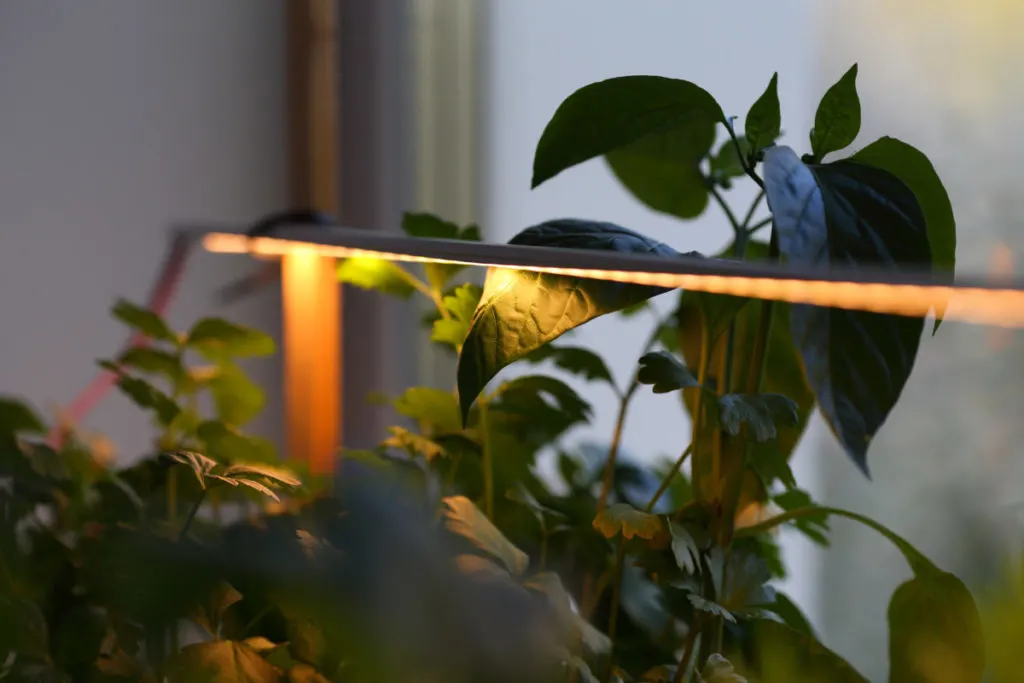
A south-facing window is your best option when choosing a windowsill, with west-facing coming in close behind. If you plan on growing plants in the winter, it’s important to make sure they’re getting the most sunlight possible.
You may wish to consider an LED grow light strip to supplement your plant’s sunlight needs for those darker months of the year. These are especially handy because you can use 3M Command Strips to attach them to the top of the window frame above the plants. Then when the weather warms up again and you’ll be opening your windows, easily remove the grow lights without damaging the windows.
I have this bundle, and I’ve used zip ties to strap the bars to my planters. They’re lightweight and easy to use. I’ve currently got them set up to start seedlings.
If you want to make your head spin, check out this in-depth look into LED grow lights, and make sense of all the crazy hype manufacturers throw at you. By the end, you’ll have a better idea of what to look for in a grow light.
Heat Retention
Most of the year, you can put your plants right up against the windows, and they’ll be fine. In the winter months, tender plants may not grow as well pressed up against a cold windowpane. However, if you have double-paned windows, this shouldn’t be an issue.
A good way to create a toasty windowsill is to plug up any spots where you can feel cold air coming in. Weatherstripping is a good option, of course, but you can also keep it simple and use whatever you have on hand.
I’m a knitter and spinner, so I have plenty of wool. In the fall, I will use a butter knife to poke wads of wool into the crevices where cold air seeps in. You can cut up an old t-shirt or use polyfill, whatever fits the bill.
Containers
When choosing containers, you’ll want to be sure you pick something with a bottom that can fit entirely on the sill, with little to no overhang. No one likes cleaning potting soil out of the carpet.
Depending on what you choose to grow, it might be best to grow each plant in its own pot or grow several plants in a small window box.
You may even wish to put a small tray of pebbles in the windowsill for the containers to sit in. Adding water to the tray will help to provide the plants with the humidity they need to thrive.
Good drainage is key, as your veggies will basically become houseplants. Be sure whatever container you choose has drainage holes in the bottom, so the roots don’t sit in soggy soil.
If you have pets or small children, you may wish to secure the pots in the window by tacking a strip of cloth or a wide ribbon across the window. Position it to run along the topmost part of the containers, and it will be much harder for curious creatures to unseat your garden.
Yes, I’m talking about your cat that likes to knock your coffee mug off the counter.
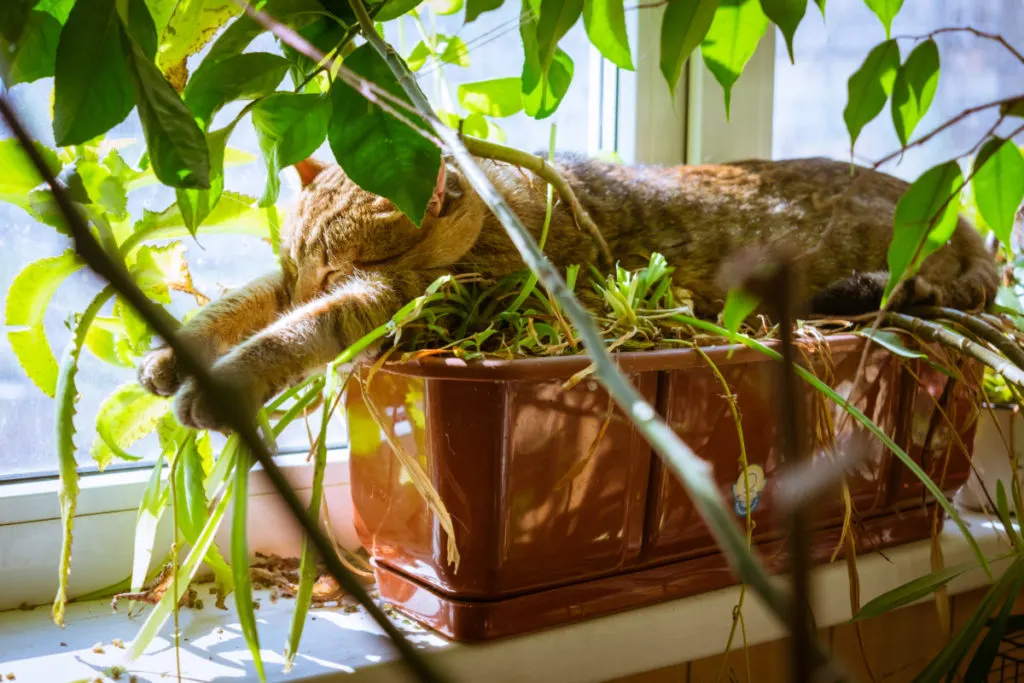
Soil
Because your plants won’t be getting nutrients from the soil outside, you’ll need to give them everything they need to grow.
Start with a good quality, well-draining potting mix. Then you may wish to mix in organic fertilizer and a bit of compost.
As your vegetables grow and take up nutrients from the soil, don’t forget to replenish by fertilizing regularly.
Pollination
An important consideration to make is whether the vegetables you choose to grow are self-pollinating. Everything on our list is; however, you’ll still need to help nature along.
Most self-pollinating plants are still aided by the wind and rain moving them, and thus, they are moved around enough to be pollinated. For the best harvest, I would suggest you give your indoor plants a helping hand by gently “tickling” flowers with an old toothbrush or a clean craft paintbrush.
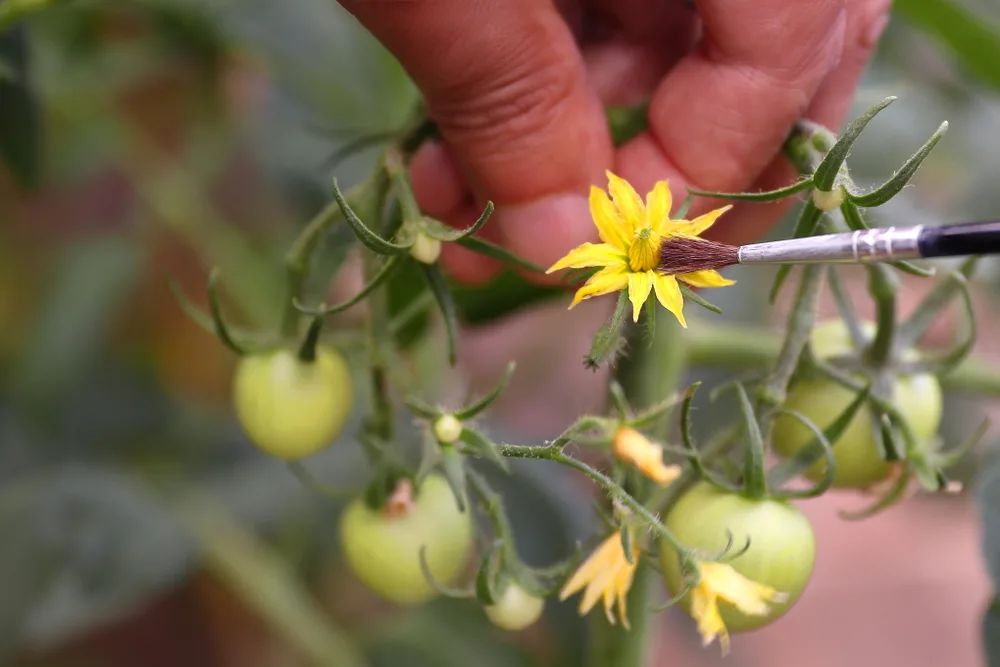
Now that you’ve got your mini garden plot ready, we should probably pick out something to grow. Lucky for you, there’s quite a list to choose from.
What Can I Grow on My Windowsill?
1. Herbs
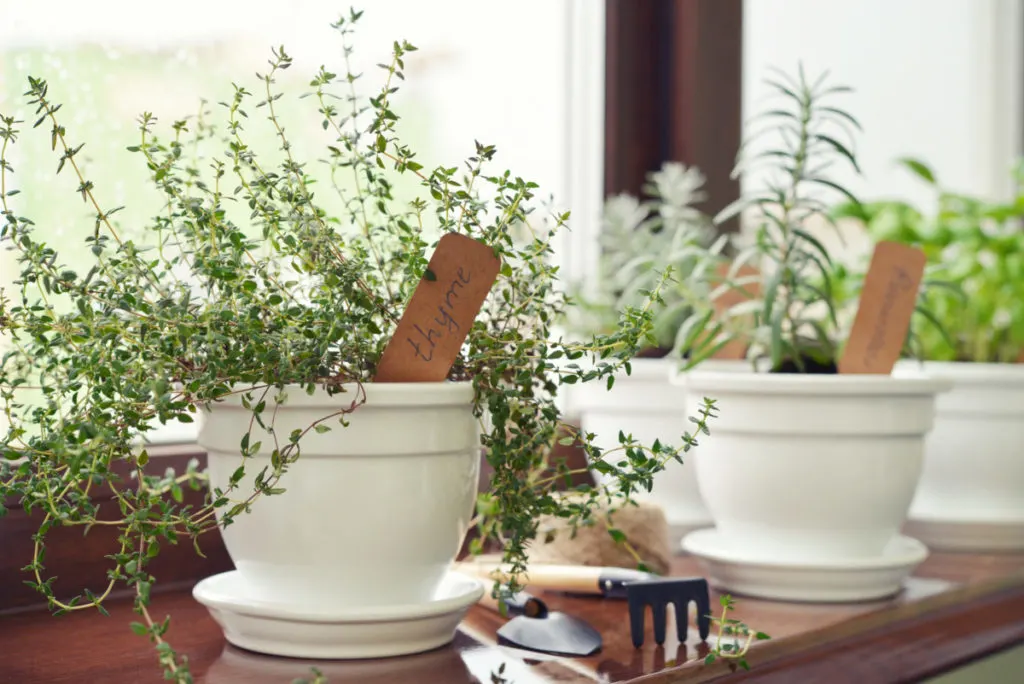
This one is the most obvious, but it bears repeating. Fresh herbs, just a scissor snip away from the stove, is a brilliant idea. Culinary herbs are always a great choice – thyme, rosemary, oregano, and parsley are the most often used.
But you should also consider growing herbs like lavender, mint and lemon balm. Just think of the wonderful tea you can make.
2. Sprouts
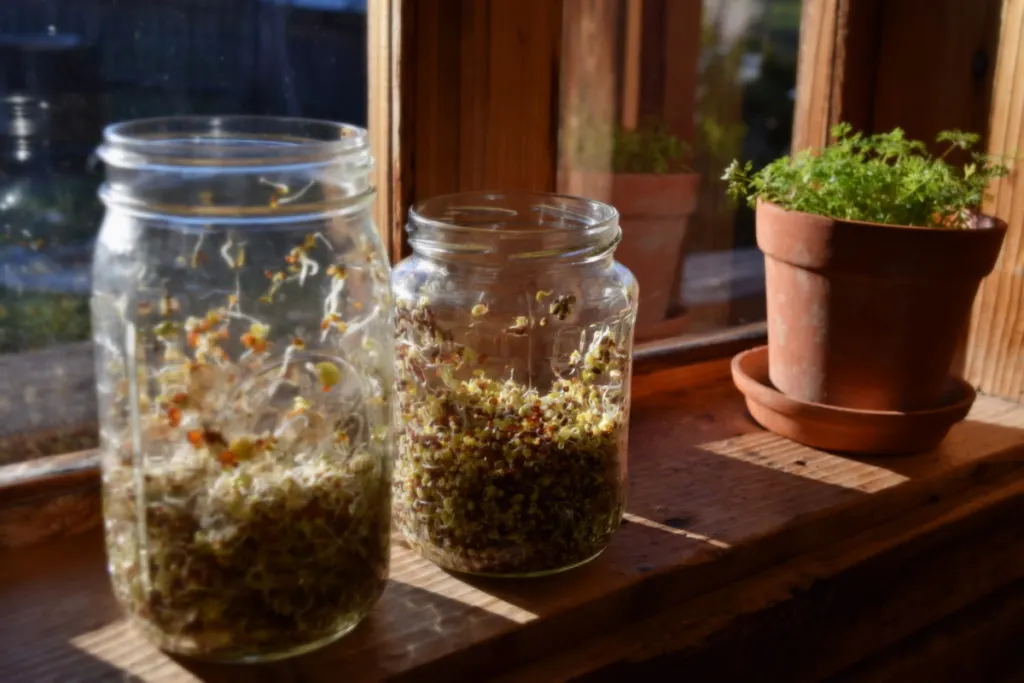
Sprouts are awesome because you don’t need soil to grow them. In fact, we’ve got everything you need to know to grow these tasty little snacks on your windowsill or your counter.
If you’re going to give sprouts a try, be sure to buy seeds that are specifically processed for sprouting. Many vegetable seeds meant for the garden are sprayed with an inoculant or other chemicals.
3. Pea Shoots
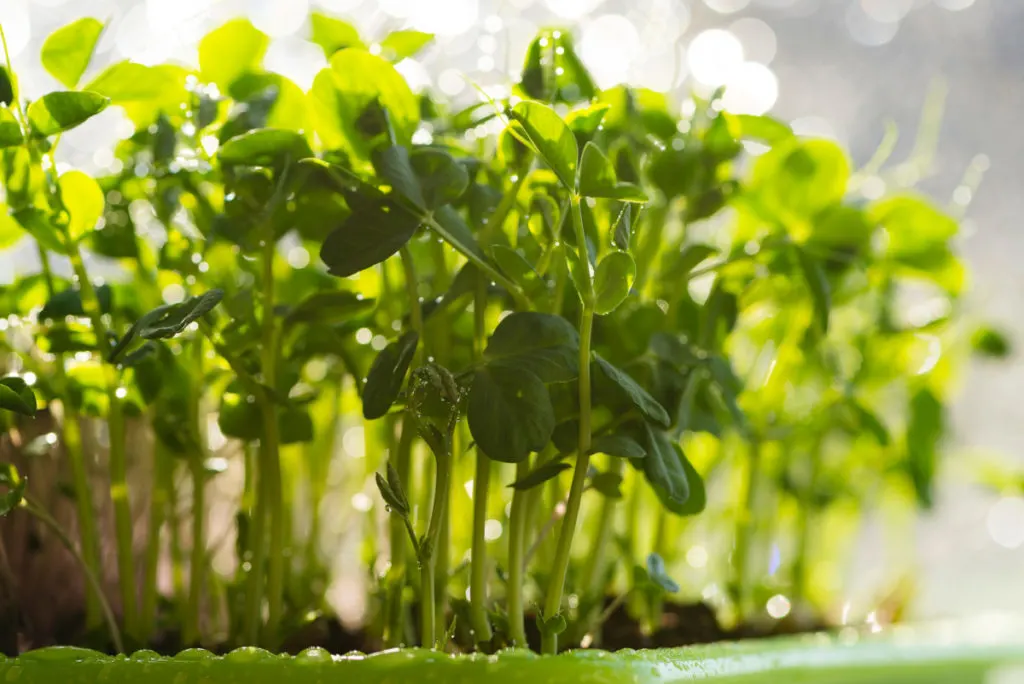
Skip the spendy eating-out prices and have this popular microgreen at home. Much like sprouts, you can grow pea shoots right on your windowsill. You can even grow them without soil. Snip and eat them as you like.
4. Kale
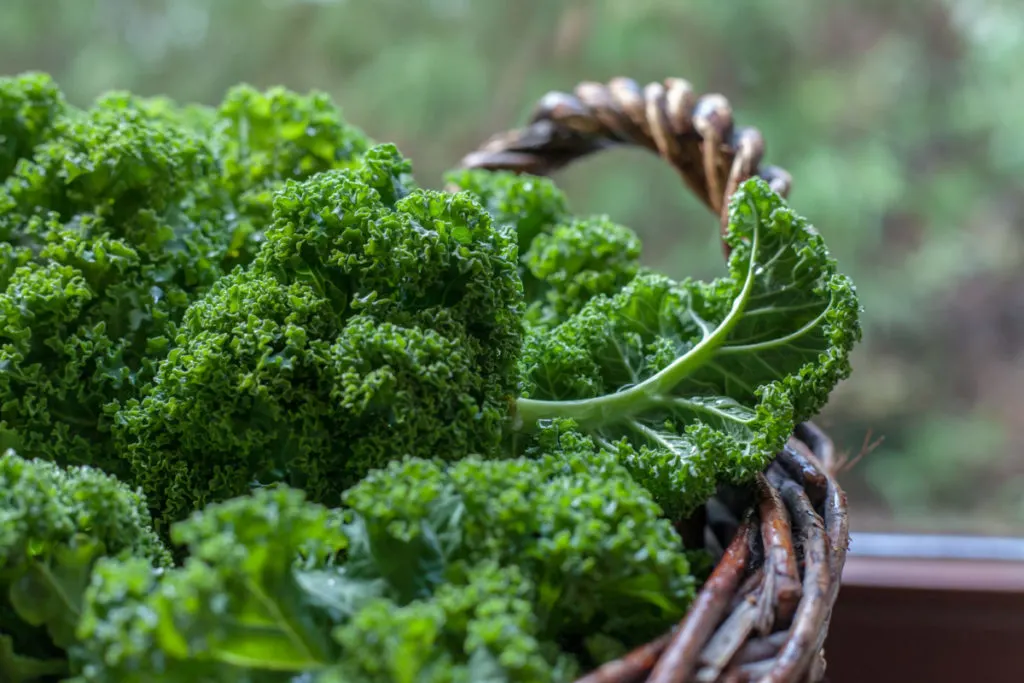
Kale is easy to grow on a windowsill, especially if you pick it while still small and tender. Or choose one of the many dwarf varieties, such as Dwarf Blue. Grab a few leaves for your morning smoothie, or make a snack-sized batch of crunchy kale chips.
5. Baby Beets
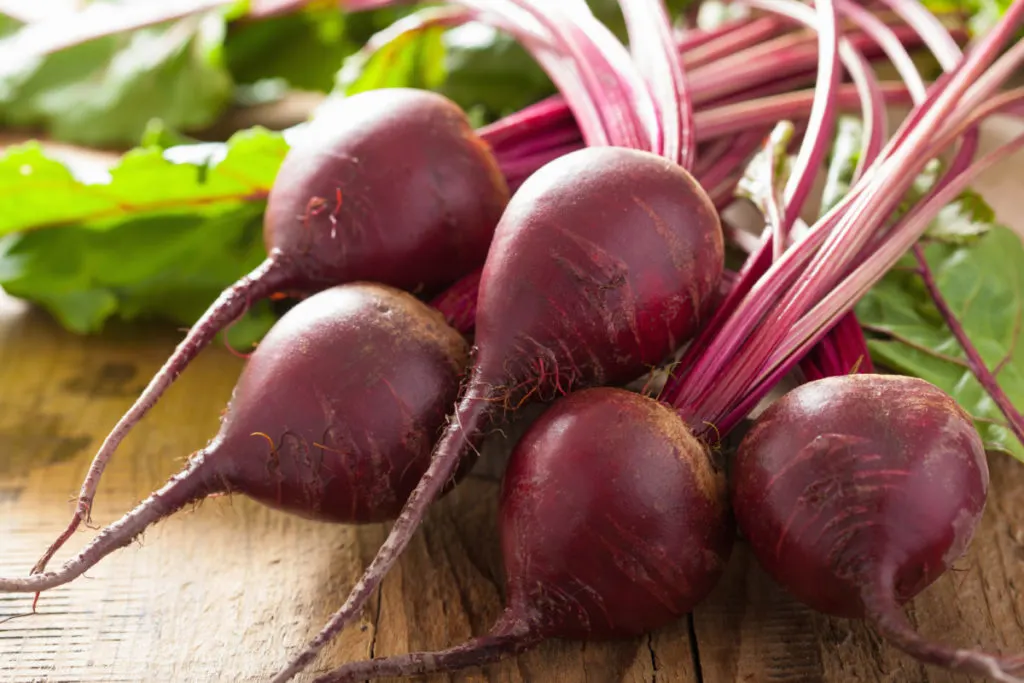
Growing root vegetables is a little tougher on a windowsill, as you’re using shorter containers. But that doesn’t mean you can’t enjoy some tiny, tender little beetroots. Just pull them before they get too large. And use the delicious greens in salads or cook as you would any other bitter green.
6. Radishes
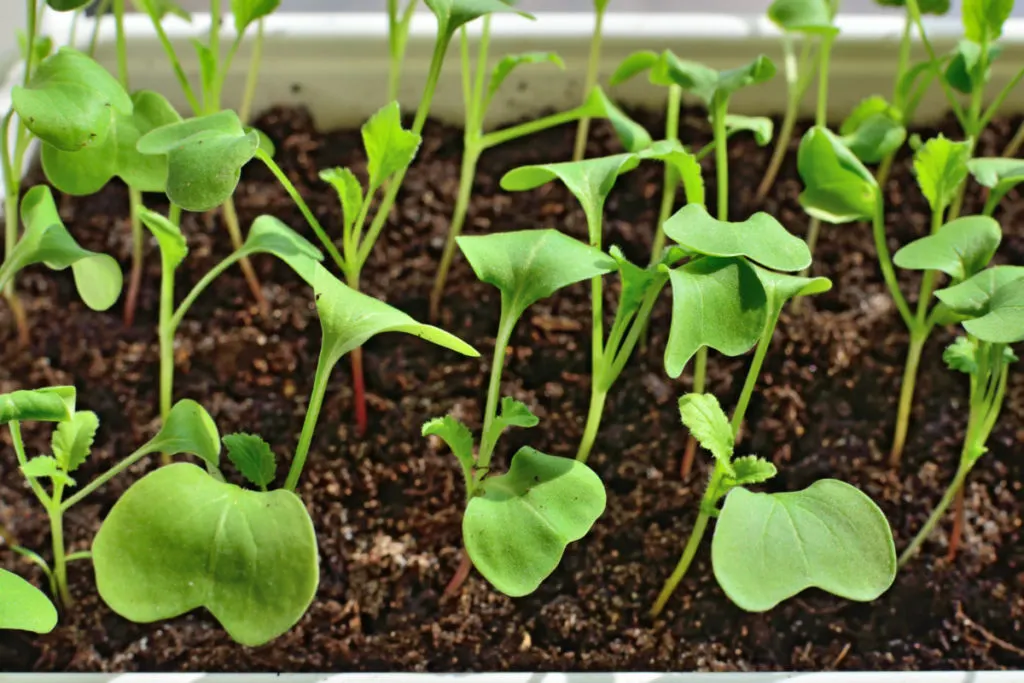
Radishes are the perfect root vegetable to grow in your windowsill garden. They don’t need to grow in deep soil, and most radish varieties take about a month to grow. As soon as one batch is ready, plant the second one in its place. Here are a few tips for the best radishes you’ll ever grow – inside or out.
7. Edible Flowers
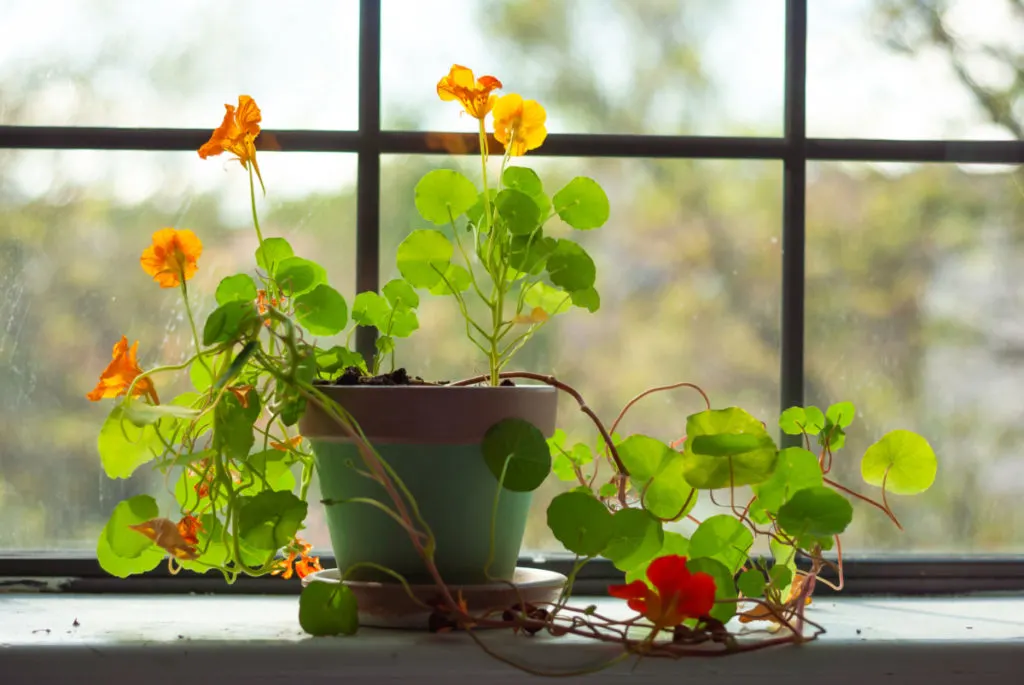
Edible flowers are also a great consideration as they do double-duty – you can eat them, and they make your home look nice. Nasturtiums come to mind, as do miniature roses or even chamomile.
8. Lettuce
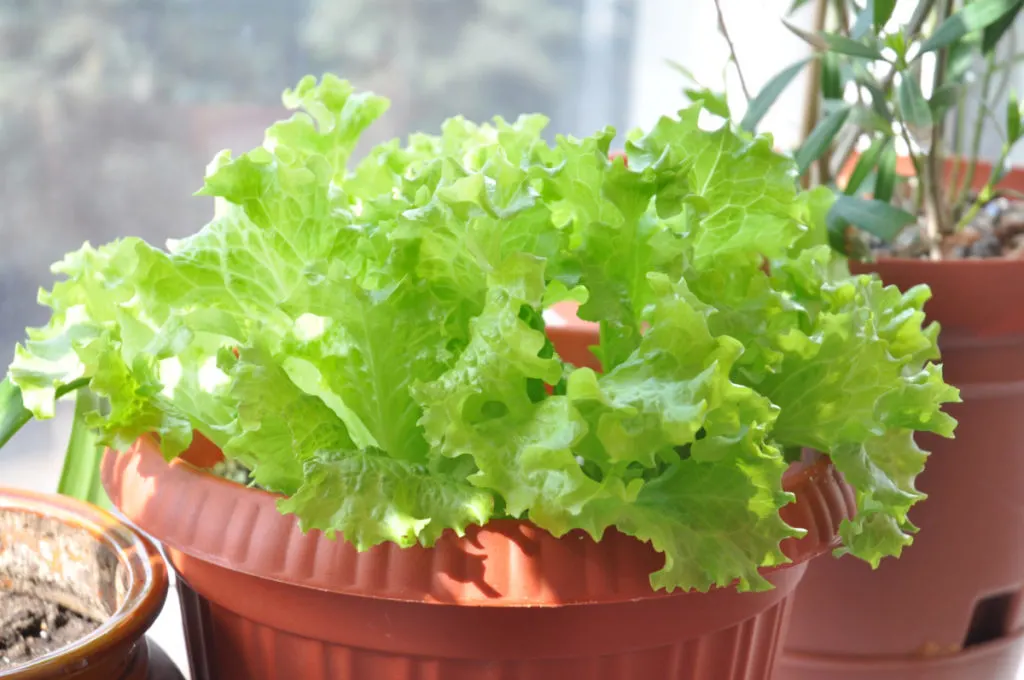
Another obvious choice is lettuce. Grow cut and come-again varieties to turn your windowsill into a permanent salad bar. You’ll never have to worry about lettuce that’s been bittered by too much heat. A few to try are Red Sails, Lollo Rossa, and Bronze Beauty.
Here’s our step-by-step guide to growing cut and come-again lettuce.
9. Spinach
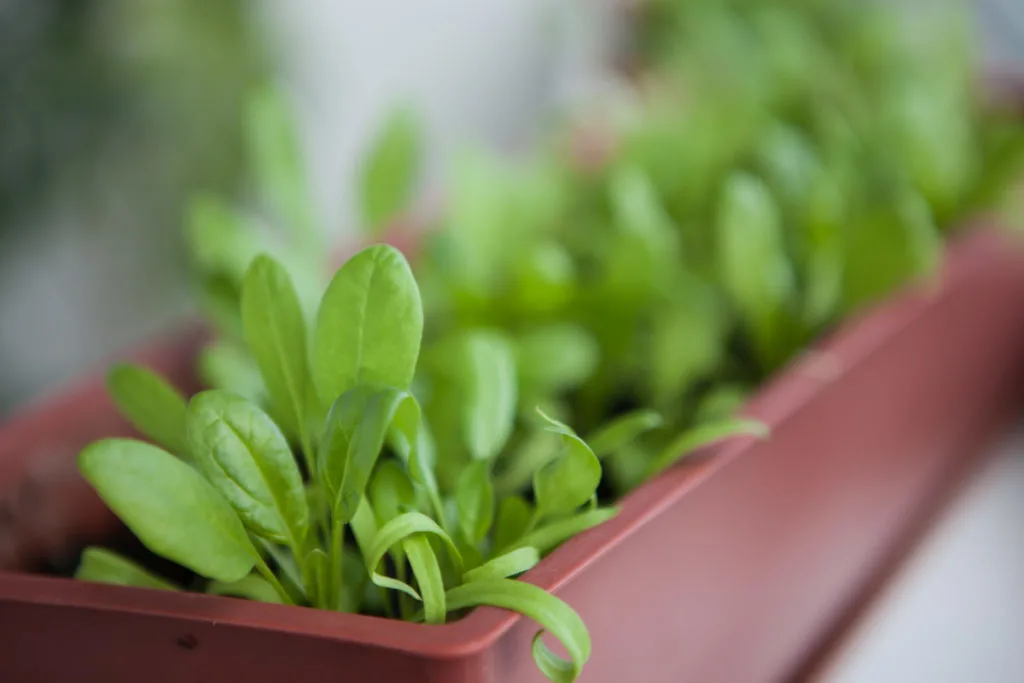
If you’re going to grow lettuce, you should grow some spinach too. This wonderful leafy green is packed with iron and all kinds of vitamins. Toss it in salads, or snip a few leaves for stir-frying or topping a homemade pizza.
10. Compact Cherry Tomato
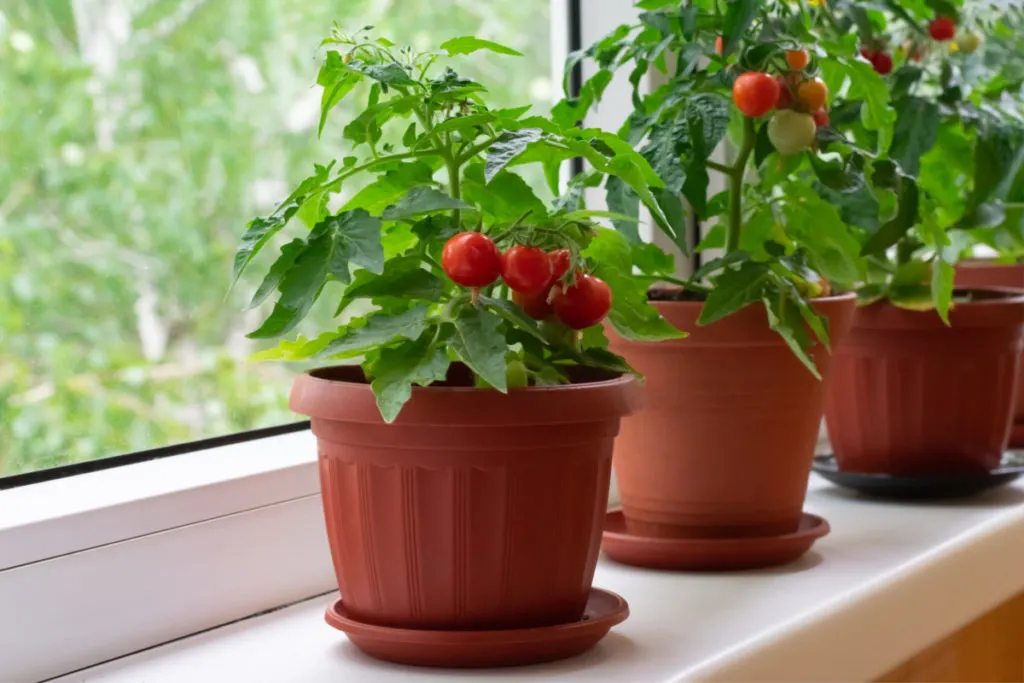
While you can grow tomatoes inside, they’ll most likely require additional light from a grow light to ripen. But it’s still not a bad idea to get a couple of cherry tomatoes going indoors. You can easily clone them to grow outside. And if you do add a grow light, you’ll have the perfect salad topping year-round. Tiny Tim, aptly named, is a great tomato to grow inside.
11. Hot Peppers
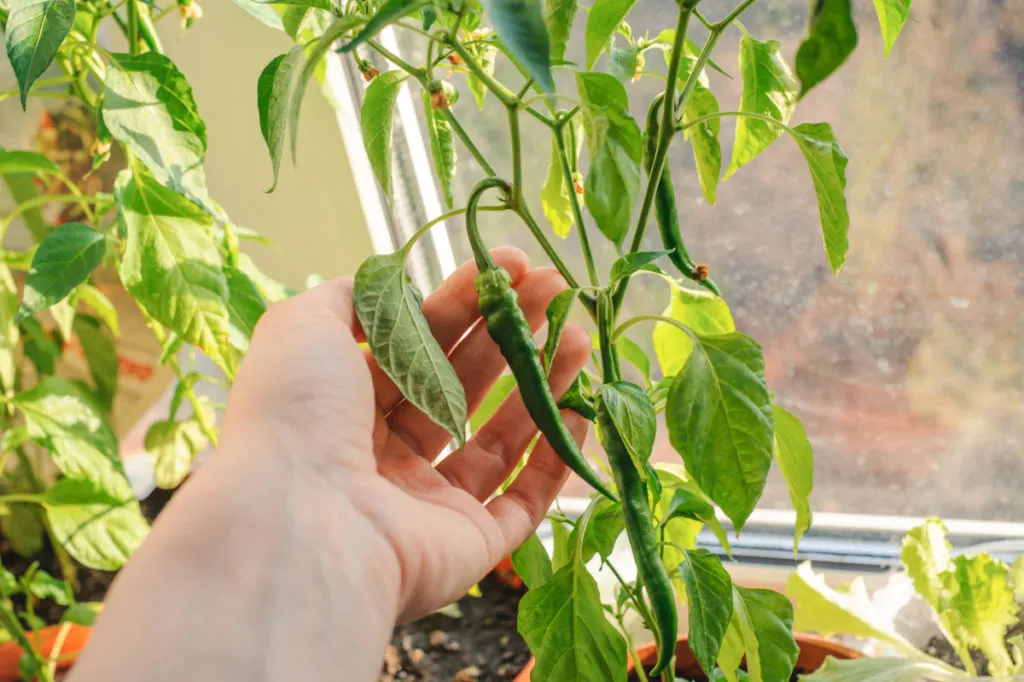
If you love to make spicy foods, you definitely need a hot pepper or two growing in your house. There are so many of these fun little peppers that are perfect for container growing these days. Take your pick from a few smaller varieties – the classic jalapeno, shishito, and the black pearl.
12. Green Onions/Scallions
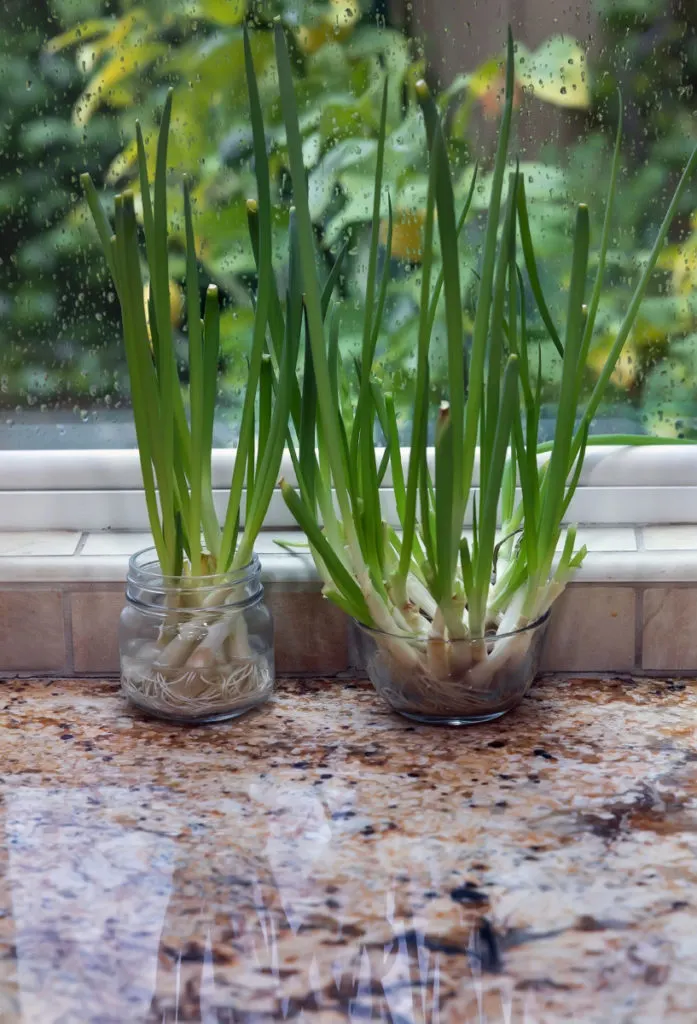
These snackable onions are the perfect sunny window addition. While most onions require quite a bit of room to grow, you can easily grow scallions on your windowsill for cooking. You can snip off the green tips as you need them. It doesn’t get fresher than that.
13. Carrots
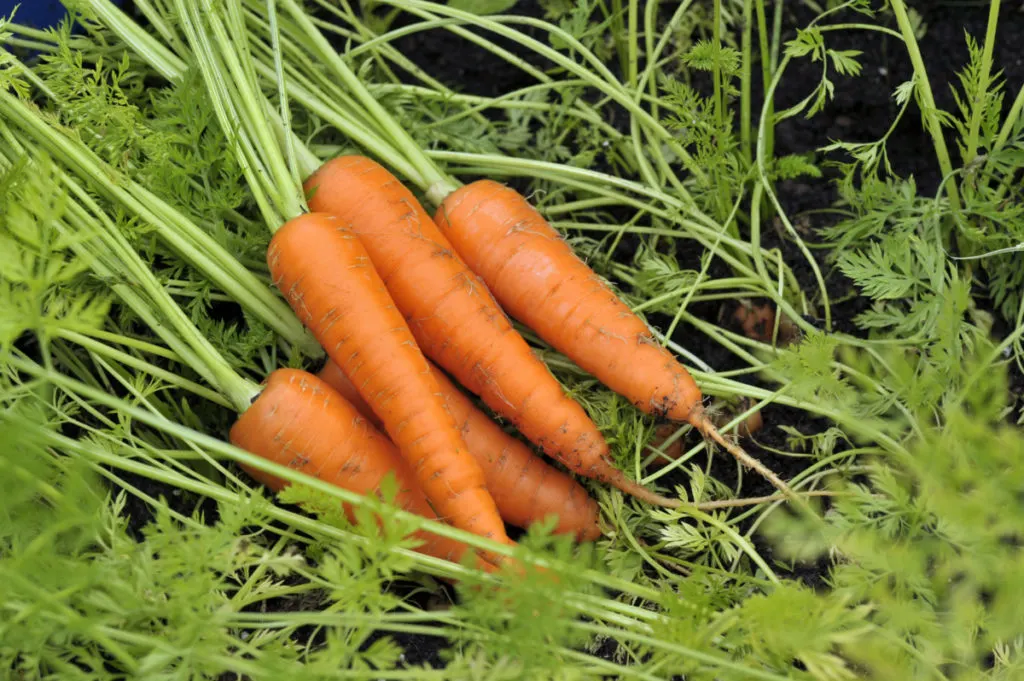
Carrots? Yup, even carrots. Of course, you’ll want to choose a shorter variety to accommodate the types of containers that will fit on your window. A few good varieties to try are Little Finger, Nantes Half Long, and Danvers 126.
The fronds look wonderful in a sunny window while they’re growing. But don’t forget to eat those carrot tops once you harvest them.
14. Garlic
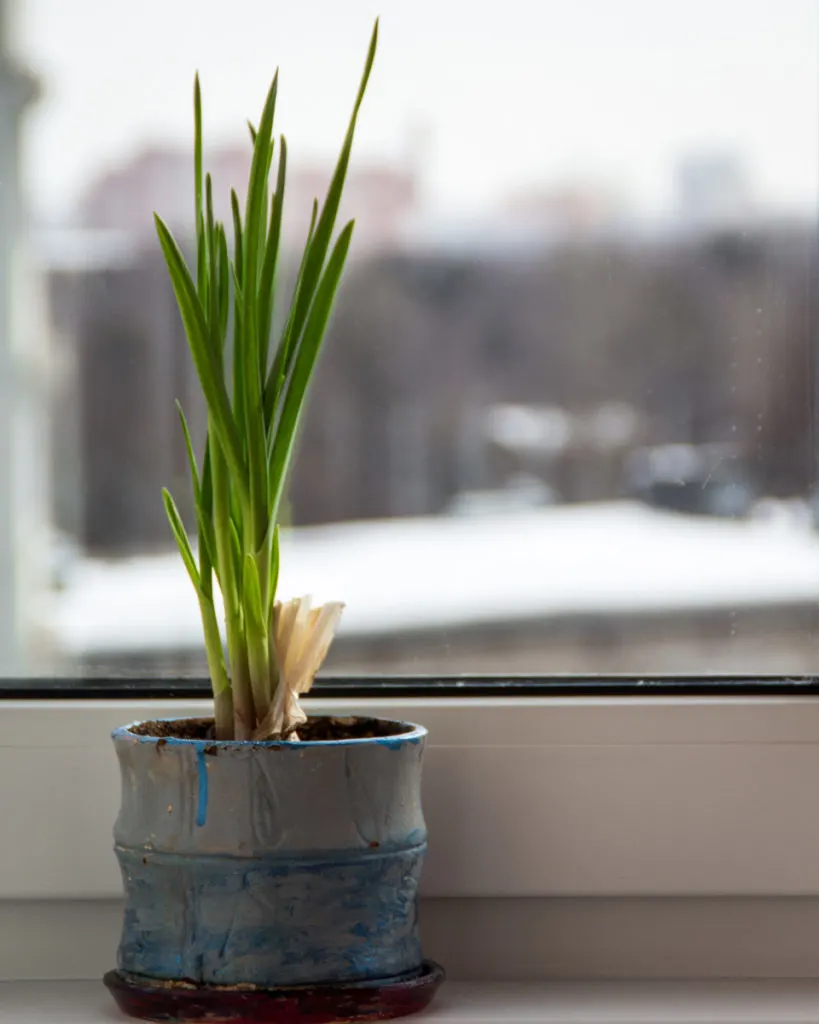
Grow garlic on your windowsill? You bet. Even if you want to transplant it out into your garden, you can always start it inside. Keep your pantry full of this delicious cooking hero, and prevent vampires from gaining access to your home at the same time.
15. Ginger
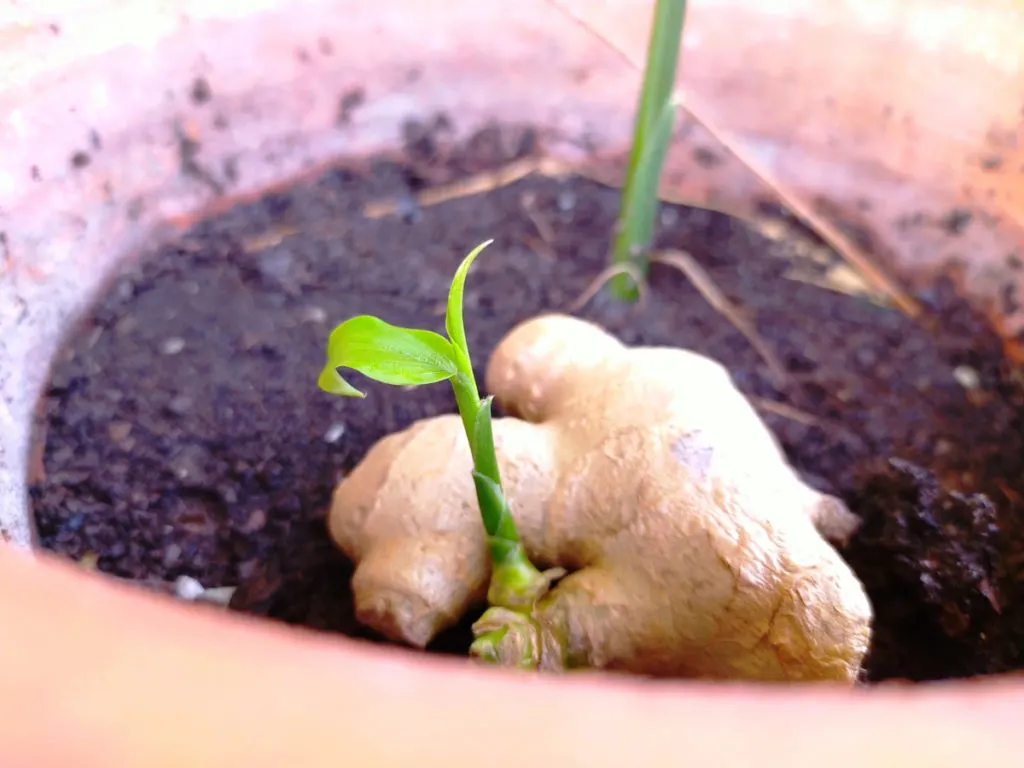
Believe it or not, you can even grow ginger root in a container on your window. Because ginger naturally grows in a tropical climate, it’s tough to grow outside for most of us. However, it will do well inside where you can control the weather. Elizabeth has everything you need to know to get started.
16. Beans
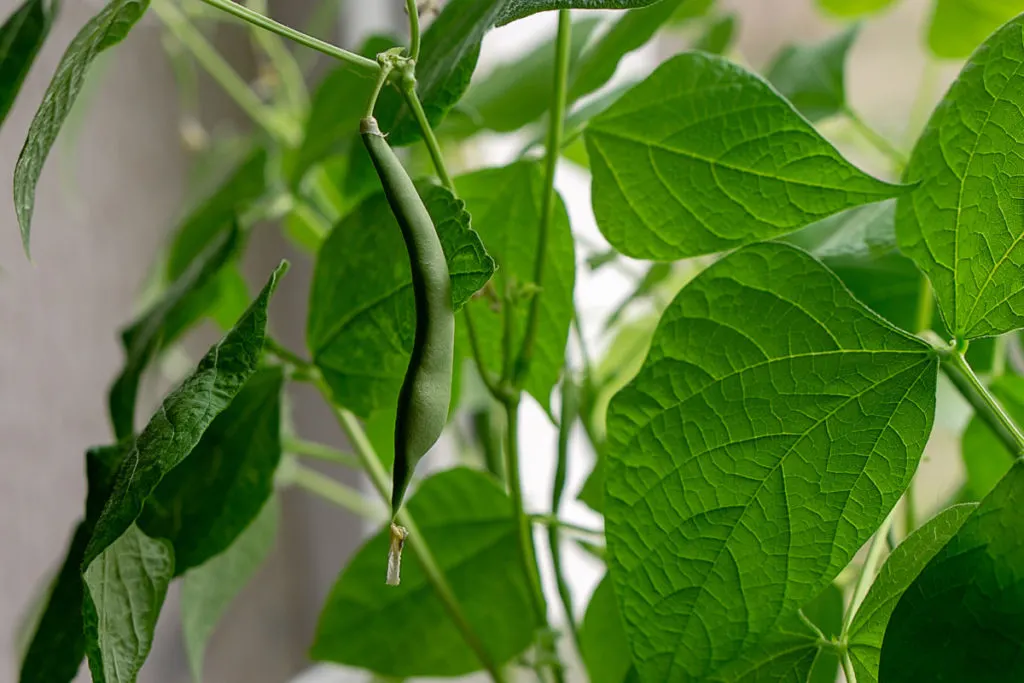
While you may only be able to grow one plant per container, you can still grow beans on your windowsill. Bush varieties are better suited to growing this way. However, if you want to add an interesting window treatment, you could grow climbing beans and train them up and around your windows.
17. Peas
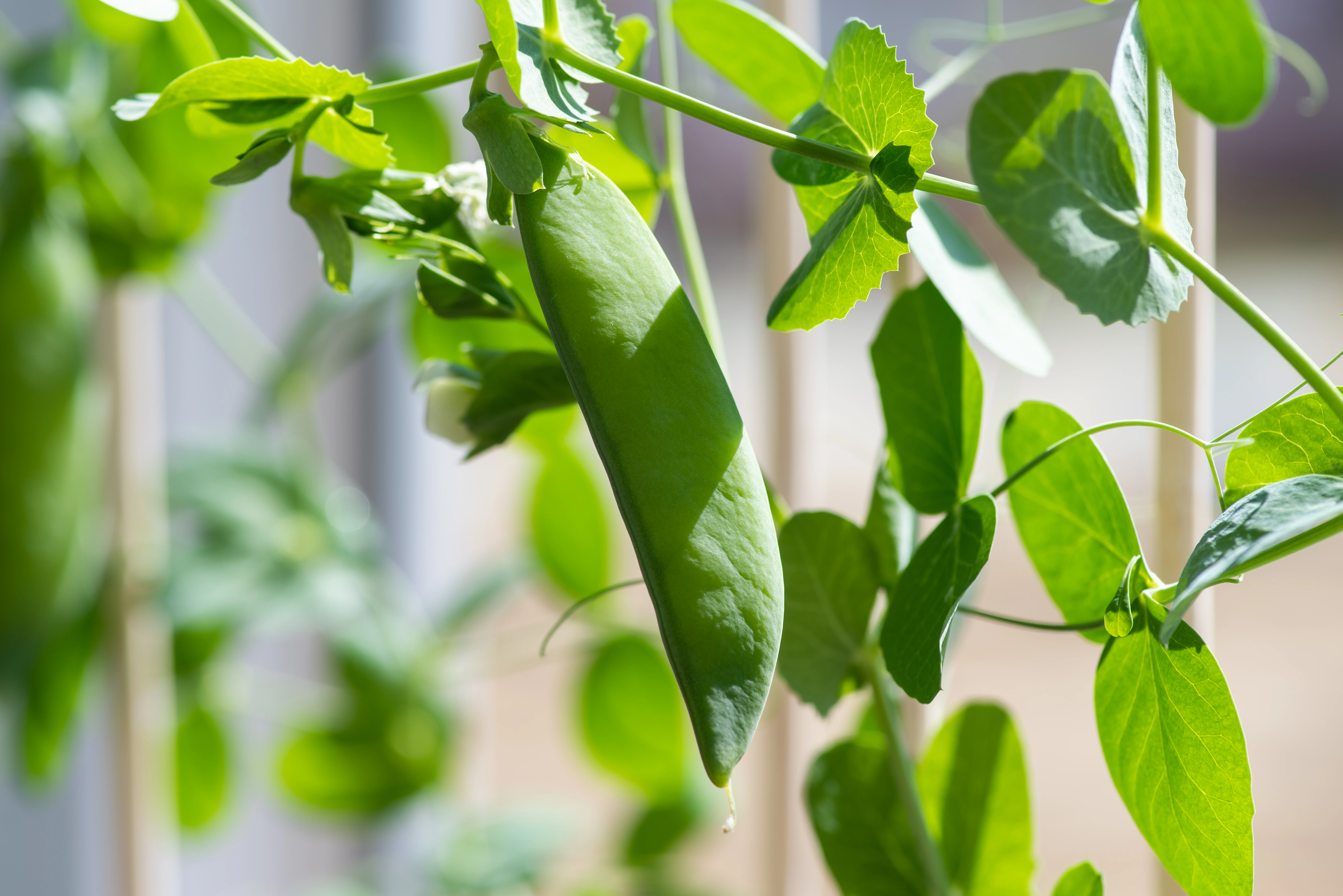
Peas can be an excellent windowsill veggie too. And you can take it to the extreme by running a few strings of twine up from their container to the top of your window frame. Let the peas take over an entire window for a beautiful and tasty bit of greenery in your home.
What a list! With all of these wonderful and delicious options, you may never have an empty window sill in your home again. Imagine all the nutritious extra produce you can grow in just a tiny bit of space. Grab your spade and some seed packets, and get going.

Get the famous Rural Sprout newsletter delivered to your inbox.
Including Sunday musings from our editor, Tracey, as well as “What’s Up Wednesday” our roundup of what’s in season and new article updates and alerts.

